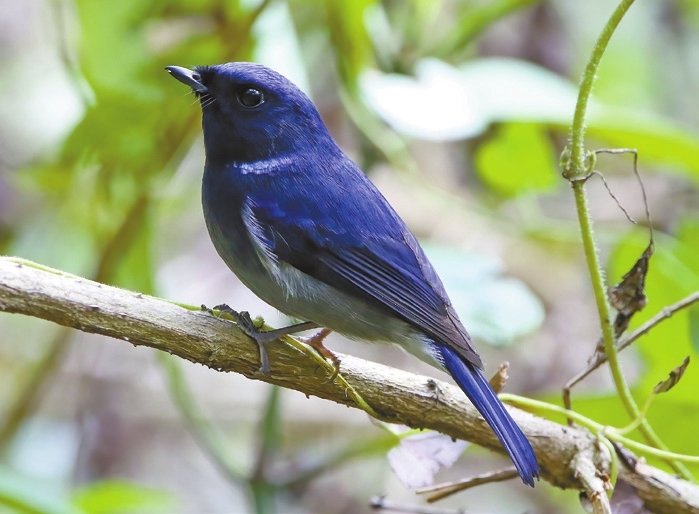
THE small niltava (Niltava macgrigoriae), a captivating bird species found in Southeast Asian montane forests, enchants birders with its vibrant plumage and unique behavior. The small-sized bird is approximately 14 centimeters in length. Males have a striking deep-blue plumage on the upperparts, contrasting beautifully with a paler coloration underbelly. Conversely, females are less flamboyant in appearance, with brownish upperparts and a soft orange underbelly. Both sexes wear a distinctive light blue patch on the neck, adding to their allure. This agile and graceful bird often perches on exposed branches or in the understory of forests, flicking its wings and tail while displaying its pretty plumage. Males are particularly vocal, singing melodious songs to establish territories and attract mates. The small niltava primarily feeds on insects, including flies, ants, termites and caterpillars. It hunts for prey by sallying from a perch, capturing them midflight, or plucking them from foliage. Their diet also includes small fruits and berries. They typically breed from March to August. Males engage in courtship displays, showcasing their colorful plumage. Once a pair is formed, they construct their nest in the hollow of a tree or on a horizontal branch. The female lays a clutch of three to five eggs, which will hatch in about 12 days. Both parents diligently care for the eggs and hatchlings, taking turns feeding and protecting the nest. The young birds fledge after about another three weeks, eventually becoming independent and venturing into the forest. This insectivorous bird preys on insects, therefore helping control their populations and contributing to the balance of local ecosystems. By consuming fruits and berries, the small niltava aids in seed dispersal, promoting the growth and diversity of plant species. The presence of this blue beauty serves as an indicator of ecological integrity. Sensitive to environmental changes, such as habitat loss and degradation, the changing population of this species can act as a timely reminder of the need for conservation efforts. | 
